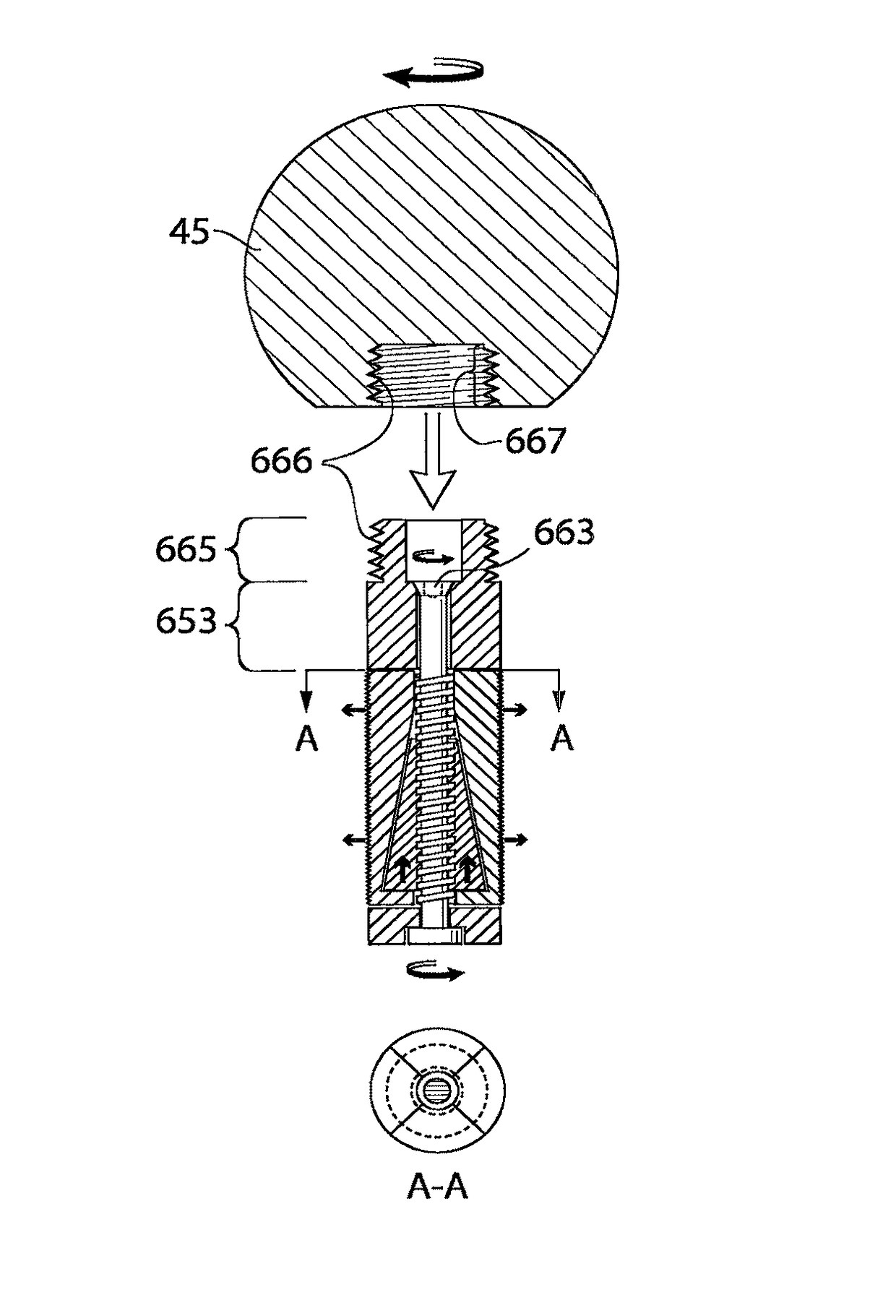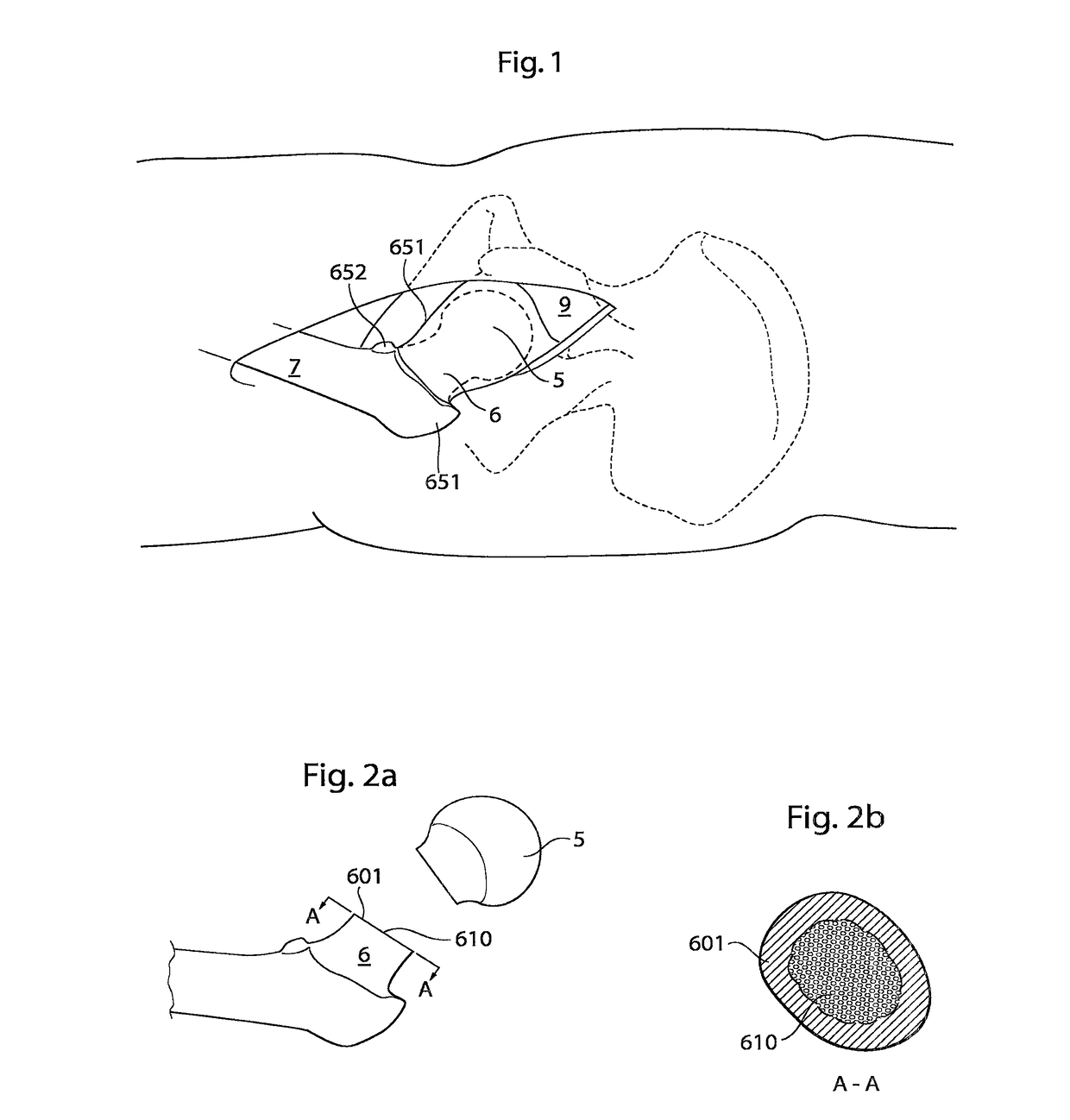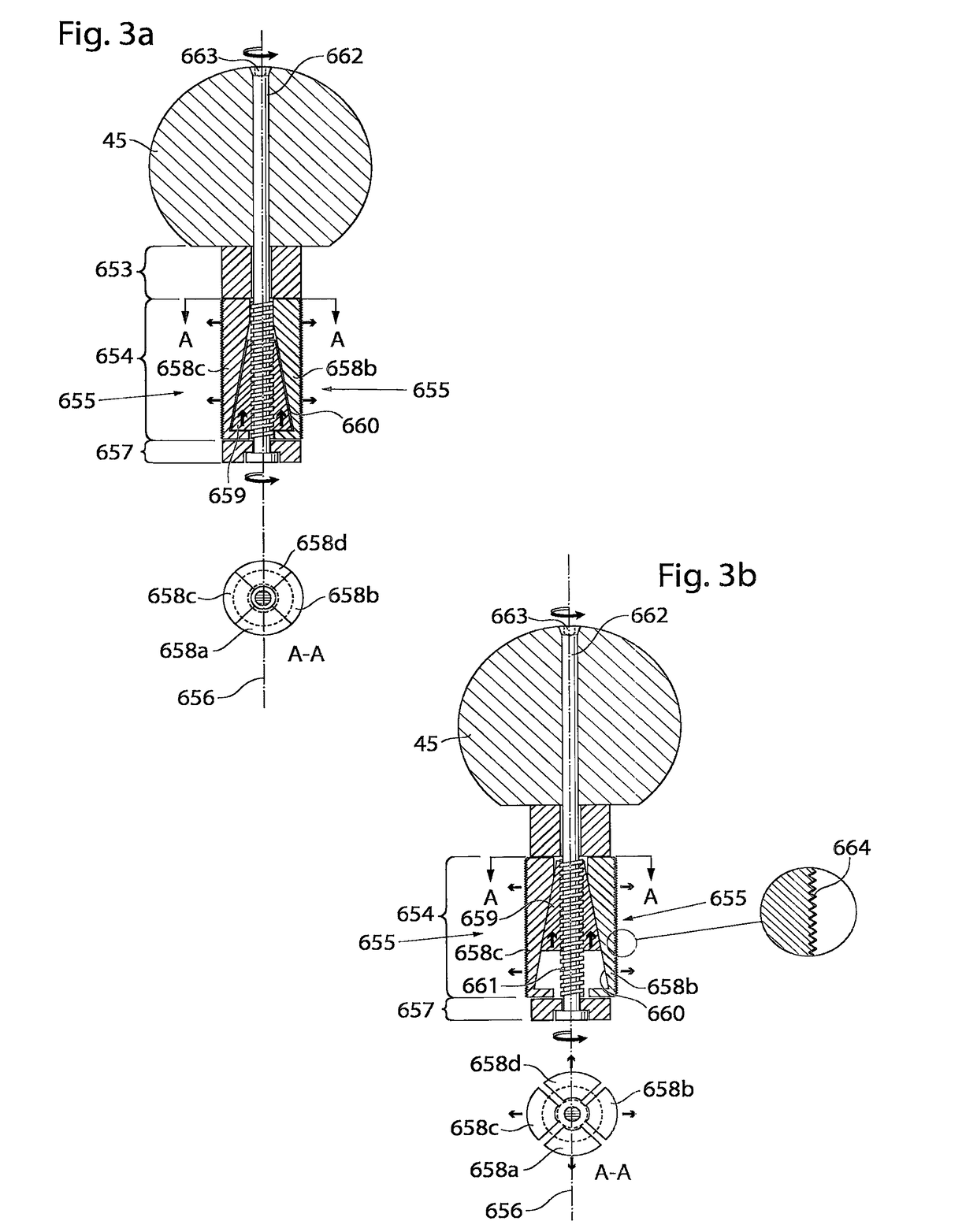Hip joint device
a hip joint and joint technology, applied in hip joints, medical science, prosthesis, etc., can solve the problems of deteriorating joint function, reducing the lubricating fluid of joints called synovial fluid, and articular cartilage becoming less effective as shock absorbers
- Summary
- Abstract
- Description
- Claims
- Application Information
AI Technical Summary
Benefits of technology
Problems solved by technology
Method used
Image
Examples
Embodiment Construction
[0074]The hip joint is a synovial ball and socket joint which permits a large motion range for allowing a plurality of different movements of the lower limb. From a neutral position the following movements of the hip joint are normally possible: Lateral or external rotation, 30° with the hip extended, 50° with the hip flexed, medial or internal rotation 40°, extension or retroversion 20°, flexion or anteversion 140°, abduction 50° with hip extended, 80° with hip flexed, adduction 30° with hip extended, 20° with hip flexed.
[0075]The anatomy of the hip joint and its surroundings is further disclosed in: Marieb et al., Human Anatomy, 2003, Benjamin Cummings, San Francisco, pages 195-202 and in Moore et al., Clinically oriented anatomy, 1999, Lippincott, Williams & Wilkins, Baltimore, pages 501-653, both hereby incorporated by reference.
[0076]A severe but yet common complication following hip joint surgery is the loosening of the prosthesis from its fixation in the femoral bone. The loo...
PUM
 Login to View More
Login to View More Abstract
Description
Claims
Application Information
 Login to View More
Login to View More - R&D
- Intellectual Property
- Life Sciences
- Materials
- Tech Scout
- Unparalleled Data Quality
- Higher Quality Content
- 60% Fewer Hallucinations
Browse by: Latest US Patents, China's latest patents, Technical Efficacy Thesaurus, Application Domain, Technology Topic, Popular Technical Reports.
© 2025 PatSnap. All rights reserved.Legal|Privacy policy|Modern Slavery Act Transparency Statement|Sitemap|About US| Contact US: help@patsnap.com



